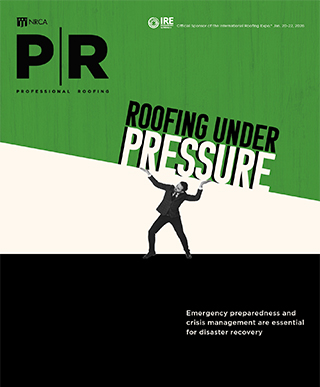How to respond to job-site opioid overdoses
The National Safety Council has released a new resource intended to help employers establish an opioid overdose response plan, according to Safety+Health magazine.
The Overdose Emergency Planning Tool guides employers with developing a response plan that includes having naloxone, an opioid overdose reversal medication, readily available.
Drug overdoses represent 10% of workplace deaths, yet 72% of employers don’t have an adequate supply of naloxone, according to NSC.
To use the planning tool, users provide information such as industry, maximum number of employers on-site per shift, number of floors in the building with active workers and estimated emergency medical services response time. The tool then generates detailed recommendations and information about topics such as naloxone storage and placement considerations, relevant laws and how to start an opioid overdose response program.
“Just as we expect to find fire extinguishers and automated external defibrillators in workplaces, naloxone should be part of every organization’s emergency preparedness plan,” says Lorraine Martin, NSC’s CEO. “This tool empowers employers to take proactive, evidence-based steps to ensure they are ready to respond during an opioid overdose emergency.”
The Overdose Emergency Planning Tool is available at nsc.org/overdosetool.
Fall protection is OSHA’s most-cited violation for 2025

Fall protection–general requirements is the Occupational Safety and Health Administration’s most frequently cited standard for the 15th consecutive fiscal year, according to Safety+Health magazine. The standards that make up the remainder of the top 10 remained unchanged from fiscal year 2024.
Following are the top 10 most-cited violations for fiscal year 2025.
- Fall protection—general requirements: 5,914 violations
- Hazard communication: 2,546 violations
- Ladders: 2,405 violations
- Lockout/tagout: 2,177 violations
- Respiratory protection: 1,953 violations
- Fall protection–training requirements: 1,907 violations
- Scaffolding: 1,905 violations
- Powered industrial trucks: 1,826 violations
- Personal protective and lifesaving equipment–eye and face protection: 1,665 violations
- Machine guarding: 1,239 violations
“While progress has been made, the consistency in citation rankings year after year signals that yesterday’s hazards are still today’s vulnerabilities,” says Lorraine M. Martin, CEO of the National Safety Council. “Employers, safety professionals and communities must intensify efforts through robust training, regular hazard assessments and leadership accountability to protect workers and save lives.”
NRCA offers a variety of information to ensure you properly train your employees and can keep them safe. Visit shop.nrca.net for more information.
DOL intends to repeal independent contractor rule
The Department of Labor intends to rescind a 2024 rule regarding independent contractor classification, according to Construction Dive. The rule is used to determine whether a worker is an independent contractor or a full-time employee owed benefits by their employer.
The current framework uses a “totality of circumstances” method, weighing six major factors considered by DOL to determine employer status, including:
- Worker opportunity for profit or loss
- Investments made by the worker and employer
- Degree of permanence of the work relationship
- Nature and degree of control over performance of the work
- Extent to which the work performed is an integral part of the employer’s business
- Use of the worker’s skill and initiative
The previous rule approached workers’ control and profit-loss opportunity.
“We anticipated this move,” says Brian Turmail, vice president of public affairs and workforce for the Associated General Contractors of America. “We would welcome a rule that offers a clear and consistent federal clarification of status and preserves the legitimate use of independent contractors.”



